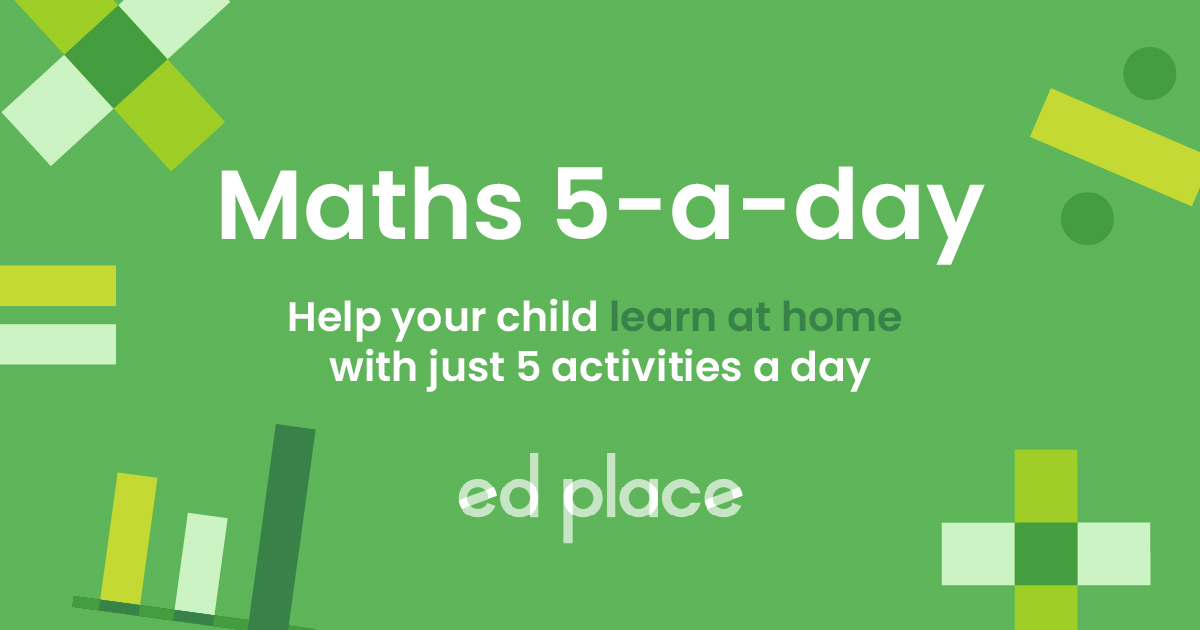
EdPlace's Year 6 Home Learning Maths Lesson: Translation
Looking for short lessons to keep your child engaged and learning? Our experienced team of teachers have created English, maths and science lessons for the home, so your child can learn no matter where they are. And, as all activities are self-marked, you really can encourage your child to be an independent learner. Get them started on the lesson below and then jump into our teacher-created activities to practice what they've learnt. We've recommended five to ensure they feel secure in their knowledge - 5-a-day helps keeps the learning loss at bay (or so we think!).
Are they keen to start practising straight away? Head to the bottom of the page to find the activities.
Now...onto the lesson!
When you hear the word 'translation' does language come to mind?
That's because translation in the context of language means changing the words, but the meaning stays the same. In maths, translation means that the shape changes position, but stays the same shape.
1) Understand how to translate a shape across a coordinate grid
2) Apply this method to independent work
3) Explain to you how they completed a translation question!
Step 1 - Understand key terminology
Coordinates – a set of numbers that show an exact position
Quadrant – each quarter of a coordinates grid is called a quadrant; there are four:
Translate – move the shape, while keeping it the same shape and size
Axes – the horizontal and vertical lines with numbers on
X-axis – the horizontal axis
Y-axis – the vertical axis
Step 2 - Check your child's prior understanding
Your child will need to know their left and their right. They will also need to know how to read coordinates – we always read the horizontal line first, then the vertical line second. A useful way to remember this: you learn to walk before you learn to climb.
Your child will also need to know how to write coordinates with brackets:
The coordinates of the red cross are (2, 5).
The coordinates of the blue cross are (4, 1).
Step 3 - Getting to grips with translation
To translate a shape, you need to pick one corner of it and count the number of squares it tells you to.
Translate this rectangle 3 squares to the right:
1) Choose a corner of the rectangle, e.g. top right. The coordinates of this are (2, 5).
2) Count the number of squares it asks – in this case, 3 to the right.
3) Draw the rest of the shape in. Remember which corner you chose!
The coordinates of the new corner are (5, 5). You will notice the x-axis coordinate is three more than the first one – this is because the shape moved three squares right.
Translate this rectangle 5 squares left and 3 squares down:
1) Choose a corner of the rectangle, e.g. bottom left. The coordinates of this are (1, 1).
2) Count the number of squares it asks – in this case, 5 left and 3 down.
3) Draw the rest of the shape in. Remember which corner you chose!
The coordinates of the new corner are (-4, -2). You will notice the x-axis coordinate is five less than the first one and the y-axis coordinate is 3 less.
The shape below is translated 3 squares right and 6 squares down. Write down the new coordinates for Point C.
1) Find the corner C. The coordinates are (-2, 2).
2) Count 3 squares right and 6 down.
3) Mark it and write the new coordinates: (1, -4).
Step 4 - Putting it into practise...
Now have a go at these examples together:
a) This shape is translated 5 squares left. What are the new coordinates of Point B?
b) This shape is translated 3 squares left and 5 squares up. What are the new coordinates of Point C?
Challenge questions:
c) The red shape is translated 3 squares right and 4 down. Which shape has it moved to?
d) This shape has been translated 6 squares left and 7 squares down. What are all three of the new coordinates?
Step 5 - Give it a go...
Now that you’ve covered this lesson together, why not put this to the test and assign your child the following multiplication activities in this order? All activities are created by teachers and automatically marked. Plus, with an EdPlace subscription, we can automatically progress your child at a level that's right for them. Sending you progress reports along the way so you can track and measure progress, together - brilliant!
Activity 1 - Understand Coordinate Grids
Activity 2 - Geometry: Translations on a Grid
Activity 3 - Translations on Coordinate Axes
Activity 4 - Geometry: Moving Shapes on a Grid
Activity 4 - Geometry: Reflections on a Grid
Answers:
a) (-4, 0)
b) (0, 1)
c) Shape D
d) (-5, -4) (-3, -2) (-1, -4) in any order
Keep going! Looking for more activities, different subjects or year groups?
Click the button below to view the EdPlace English, maths, science and 11+ activity library
All English, maths and science from Year 1 - GCSE









